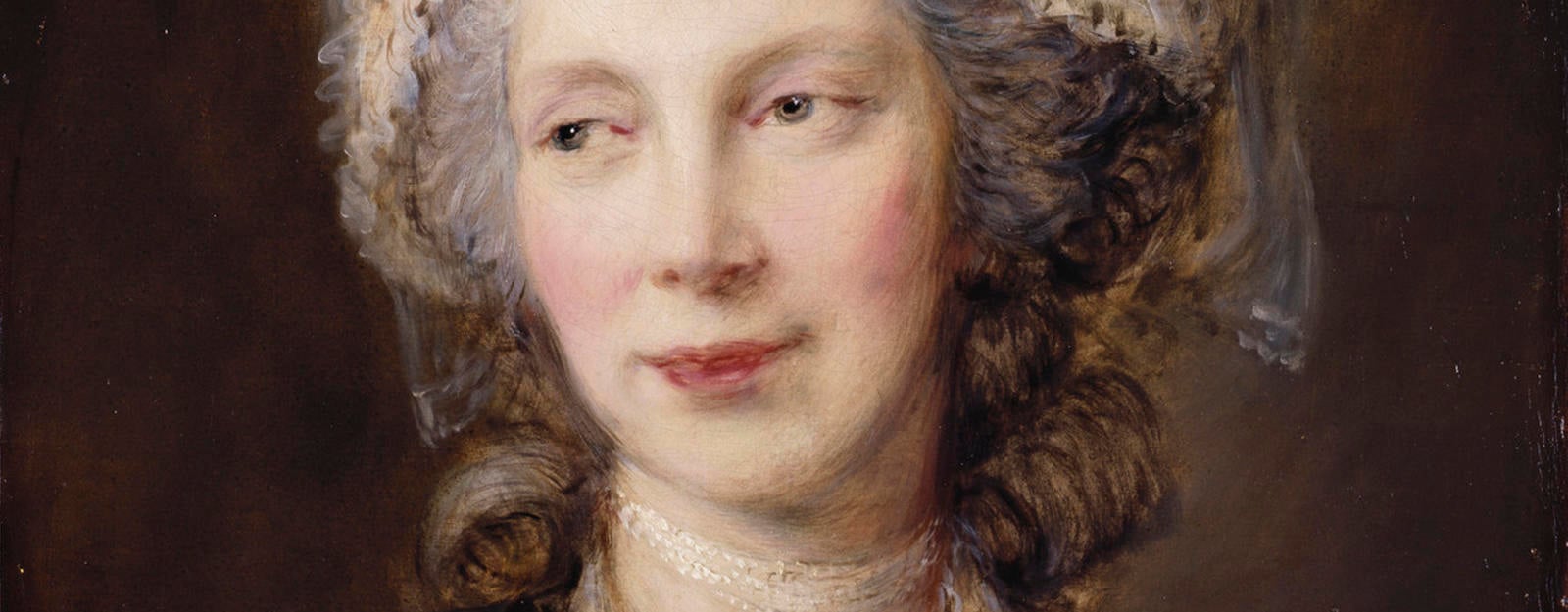Queen Charlotte of the United Kingdom (1744-1818)

- Born 1744, Untere Schloss [Mirow, Germany]
- Died 1818, Kew Palace
Queen Charlotte was born in Untere Schloss in Mirow, Germany. She was the daughter of Charles, Duke of Mecklenburg-Strelitz and married George III in 1761. They had fifteen children together - 9 boys and 6 girls. George III acquired Buckingham House (renamed the Queen’s House) for her use soon after their marriage in 1762.
Queen Charlotte's tastes were rather less plain than her husband's, and she had some very luxurious rooms in the new Queen's House. She assembled an impressive collection of furniture, Sèvres porcelain and oriental decorative arts, in ivory, porcelain, embroidered silk and lacquer and she also collected jewelled and gold boxes. Some of the most expensive furniture in the collection was made for Queen Charlotte, for example this Vile & Cobb jewel cabinet to house her extensive collection of diamonds and pearls.
Like her husband, Queen Charlotte was also interested in books and her substantial library included many volumes on botany, literature and the theatre. In the early 1790s she acquired the Frogmore estate at Windsor which she and her daughters used increasingly as a rural retreat, particularly for botanical and artistic activity. Queen Charlotte commissioned Mary Moser, a founder member of the Royal Academy, to decorate the walls and ceiling at Frogmore making the house not just a female domain but one with links to some of the most important female artists and patrons in the eighteenth century.
One of Queen Charlotte's most famous picture commissions was 'The Tribuna of the Uffizi' by Johan Zoffany. She gave Zoffany £300 to travel to Florence in 1772 and paint the works of art in the famed Uffizi art gallery. Zoffany did not return to England for seven years, and when he did the painting he had made was not to Queen Charlotte's taste. Despite his earlier success in Royal portraiture (as in this portrait of Queen Charlotte and her two eldest sons), he did not work for the King and Queen again.
Queen Charlotte and George III also patronised the British decorative arts commissioning a dinner service from the Chelsea porcelain factory and a tea service from Josiah Wedgwood. Wedgwood renamed his famous creamware, 'Queen's ware' as a result.
Most of Queen Charlotte's collection and library was sold in 1819 for the support of her four younger surviving daughters. A few items were retained or bought back (by the Prince Regent); other pieces from her collection were later re-acquired, especially by Queen Mary.